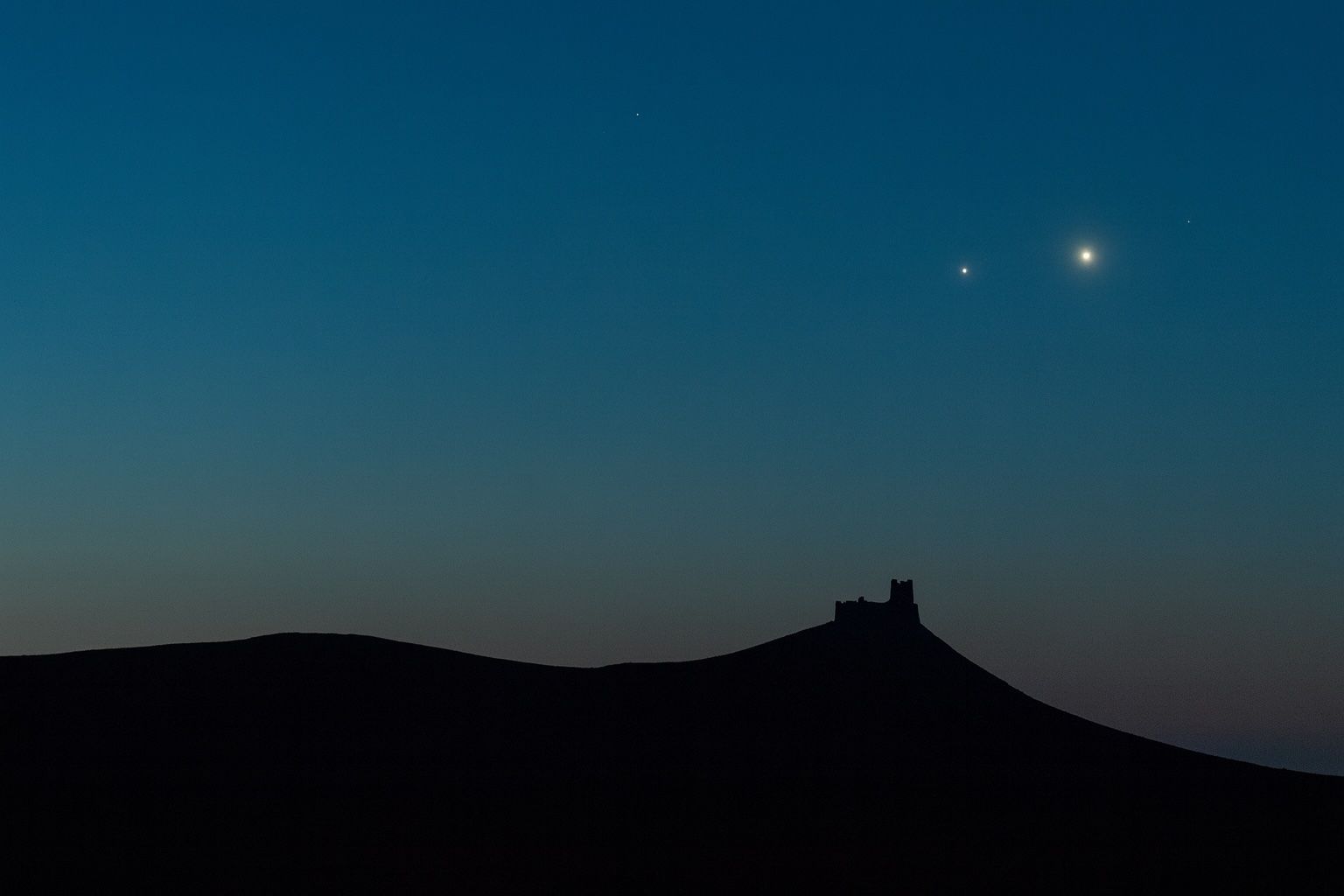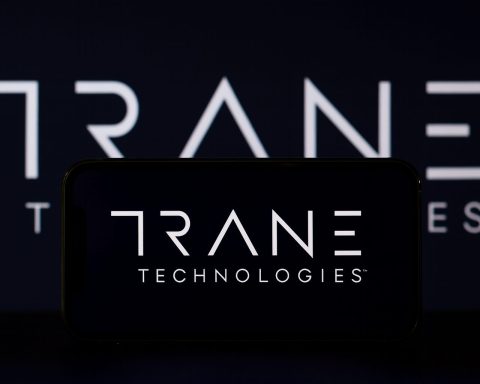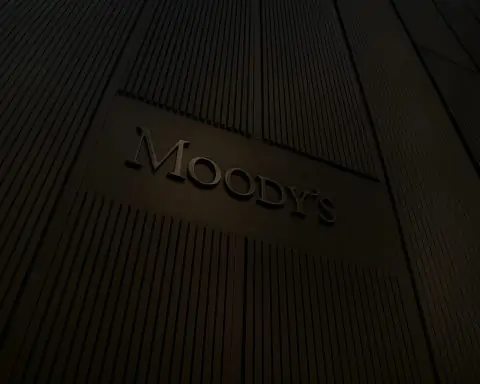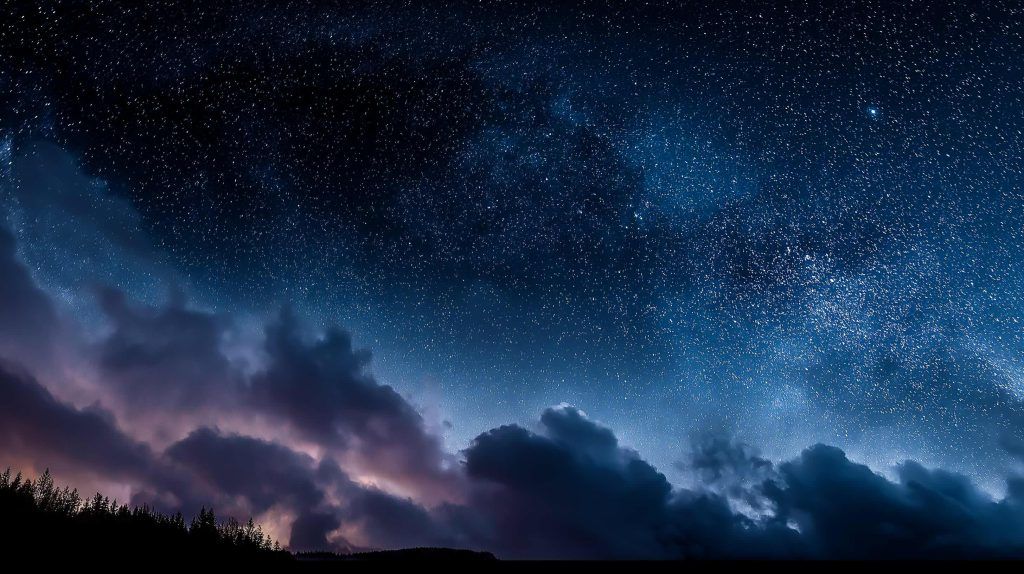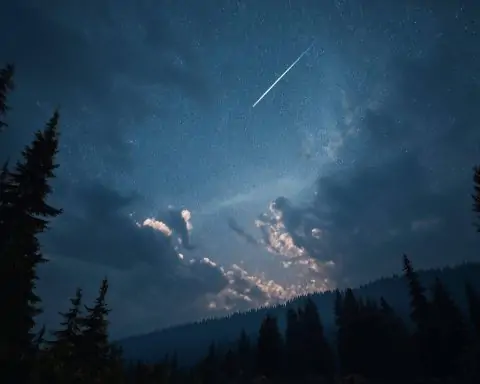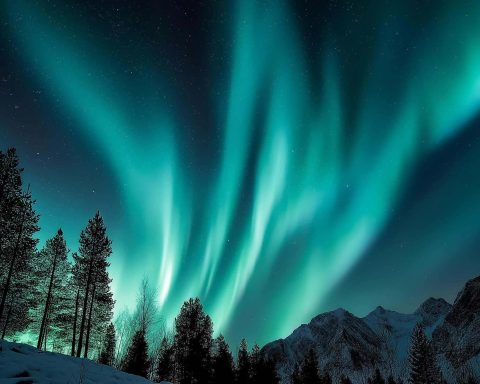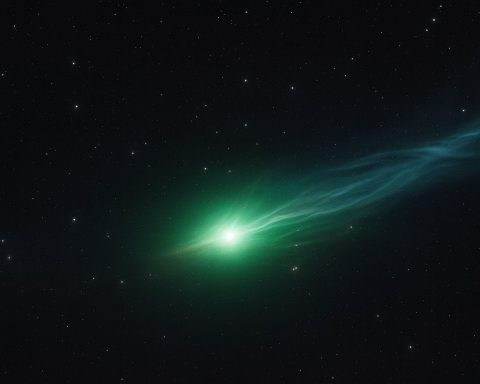- The Venus–Jupiter conjunction occurs August 11–13, 2025, with its closest approach on August 12 at about 0.86° apart.
- Venus will shine around magnitude -4.0 and Jupiter around -1.8 to -2 during the pairing.
- The pair sits about 35° from the Sun, enabling viewing in a dark dawn sky.
- Observers should view about 45 minutes to an hour before sunrise, when the planets are 5–10° above the horizon and will rise to 15–20° as dawn progresses.
- In the dawn sky, Venus appears lower and brighter, with Jupiter above, forming a striking naked-eye close pair.
- With binoculars or a telescope, both planets fit in a single wide-field view, and a telescope may reveal Jupiter’s bands and Galilean moons alongside Venus’s gibbous phase.
- This event is part of a 24-year cycle of Venus–Jupiter realignments; the 2001 conjunction was about 1.2° apart, and the 2121 encounter will be about 0.13° apart.
- The conjunction is among the brightest planetary pairings, with Venus at about magnitude -4.0 and Jupiter about -1.9.
- NASA’s What’s Up skywatching bulletin highlights the event as a must-see, and media outlets have dubbed it a cosmic kiss.
- A Perseid meteor shower peaks on August 12–13, adding a dawn-side treat during these mornings.
Venus–Jupiter Conjunction of August 2025: How to Watch the Rare Cosmic Close Encounter
Wake up early this week for a rare celestial show: Venus and Jupiter, the two brightest planets, are about to meet in a dazzling planetary conjunction before sunrise. Skywatchers globally are abuzz over this “cosmic kiss” between our Solar System’s luminaries, which will shine only about one degree apart in the predawn sky [1] [2]. It’s a sight so bright and unique that even casual observers and media outlets are sounding the alert. Here’s everything you need to know – from what this conjunction means, to when and where to see it, why it’s special, expert insights, and the cultural backstory – so you don’t miss the year’s most dazzling planetary pairing.
What Is a Planetary Conjunction? (Venus and Jupiter Close Encounter)
In astronomical terms, a conjunction is when two celestial objects appear very close together in Earth’s sky. During this celestial rendezvous of Venus and Jupiter, the planets will look like they’re almost touching, forming what might seem like a brilliant “double star” to the naked eye [3] [4]. Of course, this is an optical illusion of perspective – in reality Venus and Jupiter remain tens of millions of miles apart. They only line up along our line of sight as they orbit the sun at different distances and speeds [5].
Venus–Jupiter pairings are not completely rare in the grand scheme – as seen from Earth, these two planets align roughly once a year or so on average [6]. This happens because Jupiter’s ~12-year orbit and Venus’s ~225-day orbit occasionally bring them to the same ecliptic longitude (relative to Earth). However, each conjunction differs in timing, separation, and visibility. Some occur in daylight or too near the Sun’s glare to be observed, while others (like the current one) happen in dark skies when the planets are safely separated from the Sun [7]. In some cases the interval between Venus-Jupiter conjunctions can be as short as 10 months or as long as 15–16 months [8], depending on the orbits. This week’s event stands out because it is both very close (around 0.85° apart at minimum) and easily visible in the early morning sky, making it a truly special edition of a planetary conjunction.
When and Where to See the Venus–Jupiter Conjunction
Mark your calendars for the mornings of August 11, 12, and 13, 2025 – these are the prime dates to witness the Venus–Jupiter meetup. The two planets have been drawing closer together each day through early August, and will reach their closest apparent approach on August 12 (with August 11 and 13 nearly as close) [9]. They’ll be only ~0.9° apart at closest, which is about the width of your index finger at arm’s length or roughly half the diameter of a full moon [10] [11].
Viewing is best in the early dawn hours, before the sky grows too bright. In general, aim to go out about 45 minutes to an hour before your local sunrise time on those dates. Look low toward the east or east-northeast horizon – you’ll easily spot Venus first, blazing brilliant white (at roughly magnitude –4, it outshines every star) [12] [13]. Jupiter will be the second-brightest point of light nearby (magnitude –1.8 to –2), appearing just above or to the upper left of Venus on the peak morning [14] [15]. To the naked eye they’ll form an eye-catching close pair; no telescope is required to enjoy this! “From the Northern Hemisphere, you won’t need binoculars to spot the planets… they are bright enough to see with the naked eye easily,” notes one guide [16] [17]. Of course, if you do have binoculars or a telescope, bring them – both planets will fit in a single field of view at low magnification, offering a stunning two-for-one sight [18] [19]. In a telescope, tiny crescent Venus (about 79% sunlit) and cloud-banded Jupiter with its moons can be seen side by side [20].
Visibility Tips: Pick a spot with an unobstructed view of the eastern horizon (tall buildings or trees could block the low-rising planets). The planets will be fairly low in the sky at first – roughly 5–10 degrees above the horizon an hour before sunrise (that’s about one “fist-width” at arm’s length) [21] – but will climb a bit higher (15–20° up) as dawn progresses [22]. They should remain visible until the growing daylight washes them out. Observers at mid-northern latitudes (e.g. U.S., Europe) will see the pair about 7° high by around 4:00–4:30 a.m. local time [23], whereas those in more southerly latitudes will catch them slightly higher in a darker sky. (In fact, the planets shine against the backdrop of winter constellations – Orion, Taurus, Gemini, and Sirius – rising behind them [24] [25].) After August 13, Venus and Jupiter will begin to separate again, so these few mornings are the sweet spot for the tightest view [26] [27].
Don’t confuse them with other objects: Venus will be extremely bright and slightly lower; Jupiter will be a tad fainter and above it. No star in that area rivals their brilliance. If you’re up before dawn, you may also notice Saturn higher in the south and even Mercury very low near the horizon (around Aug 15–20, Mercury joins the morning scene) [28] [29]. And as an added treat, the famous Perseid meteor shower peaks on the same nights (Aug 12–13). The Perseids this year are partially washed out by a bright Moon, but a few shooting stars might be spotted while you’re out planet-gazing [30] [31] – making for a delightful double feature in the sky.
Why This Conjunction Is Astronomically Special
This Venus–Jupiter conjunction is drawing extra excitement from astronomers for a few reasons. First, it’s the closest observable pairing of these two planets in several years. At minimum separation on August 12, Venus and Jupiter will be only about 0.86° apart – less than twice the apparent diameter of the Moon [32]. This is unusually tight; by comparison, many Venus-Jupiter meetups are 2–5° apart or happen in daylight. In fact, NASA highlights this event as the month’s showstopper, calling it “the real highlight of August” as the planets “appear at their closest on the 11th and 12th — only about a degree apart” [33].
Secondly, the timing is ideal for observers. This conjunction occurs a safe distance from the Sun’s glare (about 35° elongation from the Sun) [34], allowing it to be viewed in a dark sky before sunrise. Not every yearly alignment is so convenient – some conjunctions happen too near the Sun to see. For example, upcoming Venus-Jupiter conjunctions in 2027 and 2030 will technically occur, but the planets will be lost in the Sun’s dawn light (only 4°–8° away from the Sun) and effectively unobservable [35]. By contrast, the August 2025 event rises high enough to be easily visible worldwide (barring clouds).
Another point of significance: this conjunction is part of a remarkable 24-year cycle. Every couple of decades, Venus and Jupiter realign in almost the same part of the sky under similar conditions [36]. If we look back 24 years, a similar close Venus-Jupiter meeting occurred in early August 2001; looking ahead, a comparable one will occur in August 2049 [37] [38]. In each 24-year iteration, the planets’ separation tends to get even smaller. Astronomers note that each cycle brings Venus and Jupiter slightly closer – for instance, the 2001 conjunction was about 1.2° apart, whereas 2025’s is ~0.9° [39]. The trend continues into the future: in 2121, the two planets will come an astonishing mere 0.13° apart (virtually overlapping to the eye) during a dawn meeting [40]. Such tight approaches are extremely rare and breathtaking (mark your calendars for September 4, 2121 if you plan on living a really long time!).
Finally, from an observational standpoint, this is one of the brightest celestial pairings possible. Venus is the brightest planet in Earth’s sky and will gleam at around magnitude –4.0, while Jupiter is the second-brightest planet at about –1.9 magnitude [41]. Seeing these two brightest planets side by side is a striking visual and also scientifically interesting. With a telescope you can compare their disks and colors simultaneously: golden Jupiter (a gas giant ~11 times Earth’s diameter) will appear about twice the apparent size of snow-white Venus, yet Venus will shine more intensely since it’s much closer to the Sun and covered in highly reflective clouds [42]. It’s a vivid demonstration of how brightness isn’t just about size – it’s also distance and reflectivity [43]. All in all, this conjunction provides a fantastic “live” lesson in astronomy, as well as a gorgeous sight.
Expert Excitement and Skywatcher Tips
Seasoned astronomers and skywatching experts are eager for this event and encouraging the public to enjoy it. “Don’t miss next week’s pairing of the two brightest planets. It’s worth the early wake-up,” writes David Dickinson, a science writer at Universe Today [44]. Many professionals note that planetary conjunctions, especially of Venus and Jupiter, are crowd-pleasers that spark interest far beyond the usual astronomy circles. “Be sure to share the pairing with the public; there tends to be lots of interest around planetary meetups,” Dickinson adds, recalling how even non-astronomers were captivated by a similar close conjunction in the past [45].
Astronomy educators are also chiming in with advice. Joe Rao, veteran sky columnist for Space.com, emphasizes finding a clear horizon and viewing about 45 minutes before sunrise for the best experience [46] [47]. He notes that onlookers will be able to watch the planets draw together each morning leading up to the 12th. Rao even points out a special treat for telescope users: on August 11 and 12, both Venus and Jupiter will fit in the same wide-field telescope view, something that doesn’t happen often with planets of this brightness [48]. Through a scope you might glimpse Jupiter’s four Galilean moons lined up near the planet, and maybe even discern Venus’s gibbous phase [49] – a rare chance to see two worlds in one glance.
NASA’s own outreach team is excited too. In NASA’s “What’s Up” skywatching bulletin, August’s close approach of Jupiter and Venus is highlighted as a must-see event, happening against the sparkling backdrop of Orion and other winter stars rising in the east [50] [51]. They remind us that a slender crescent Moon will join the same region of sky a week later (on Aug 19–20) once Venus and Jupiter start to part, creating another pretty scene with Moon + planets [52] [53].
Practical tips from the experts: If you have them, bring binoculars – not only do they enhance the view of the planets (you might spot Jupiter’s moons even with handheld binocs), but they could help you attempt some daytime viewing. Advanced observers note that in theory you can continue to follow Venus and Jupiter after sunrise if you know exactly where to look, since Venus especially can be visible in daylight [54]. (Exercise caution if trying this – never scan near the Sun with optics!). Another tip: try photographing the conjunction. It’s such a bright pairing that you don’t need fancy equipment – a modern smartphone on a tripod or steady surface can capture Venus and Jupiter as two glowing dots in the dawn sky [55]. Use a night mode or a long exposure of a few seconds to pick up the scene. If you’re an avid astrophotographer, this is a great opportunity to frame the planetary duo with some interesting foreground scenery at dawn.
Cultural and Historical Significance of Venus–Jupiter Conjunctions
Celestial events like this have not only scientific appeal, but also a rich cultural and historical resonance. Venus and Jupiter are named after powerful deities – Venus after the Roman goddess of love (Greek Aphrodite), and Jupiter after the king of the gods (Greek Zeus). In ancient times, these were omenous objects: the brightest “wandering stars” in the sky often symbolized cosmic events or messages from the heavens. It’s easy to imagine how our ancestors might have reacted to seeing the two brightest planets merge into one beacon.
Indeed, some historians and astronomers have theorized that an extraordinarily close Venus–Jupiter conjunction in antiquity could be the source of the “Star of Bethlehem” legend. One famous scenario occurred in 2 B.C.: on June 17, 2 B.C., Venus and Jupiter converged so closely after sunset that they nearly appeared as a single star to the naked eye [56] [57]. Calculations show the pair was only 0.01° apart – essentially fused into one point of light – in the western sky that evening, an exceedingly rare occurrence [58] [59]. Ancient skywatchers in the Middle East certainly would have noticed such a brilliant “double planet.” This event (and an earlier Venus-Jupiter dawn conjunction in August 3 B.C.) has led to speculation that the Magi in the biblical story might have been inspired by these planetary alignments [60] [61]. While we can’t know for sure if a conjunction was “the” Star of Bethlehem, modern researchers point out that a Venus-Jupiter pairing is exactly the kind of rare, eye-catching sky event that ancient astrologer-priests would interpret as profoundly meaningful [62] [63].
Beyond biblical lore, Venus-Jupiter conjunctions have been noted in many cultures. In astrology (which historically was intertwined with astronomy), Venus and Jupiter are often considered positive omens. They are the two “benefic” planets in traditional astrology, associated with love, fortune, and kingship. A conjunction of Venus and Jupiter is thus seen as especially auspicious – some Eastern astrology traditions call it one of the most fortunate yogas (alignments), thought to bless people with prosperity, harmony in relationships, and even spiritual growth. It’s little wonder that such events have nicknames like the “kiss” or “meeting” of planets in various folklore. (In fact, some sky lovers today have playfully dubbed the 2025 conjunction a “cosmic kiss,” imagining the goddess of love and the giant king planet greeting each other in the heavens.)
Historically, notable Venus-Jupiter conjunctions have been recorded as portents. For example, Chinese imperial astronomers and medieval European skywatchers alike would take note when these bright planets drew close, sometimes linking them to the rise of leaders or other significant earthly events (for good or ill). While we no longer view celestial events as omens, the human fascination with them remains. The December 2020 Jupiter-Saturn conjunction (dubbed the “Christmas Star”) became a global media sensation, showing that these rare alignments still captivate the public imagination [64]. The August 2025 Venus-Jupiter meeting, being even brighter though not as rare as the 2020 event, is likewise generating buzz and wonder – albeit without any doomsday or prophetic interpretations attached!
Public Buzz and How to Get Involved
This dawn cosmic spectacle is drawing interest not just from astronomers but also from the general public and media. Major news outlets, science websites, and even lifestyle publications have featured the upcoming conjunction, underscoring its broad appeal. (Even MarthaStewart.com ran a piece urging readers to wake up early for the “dazzling Venus–Jupiter conjunction” and explaining the event in layperson’s terms [65] [66]!) On social media, amateur astronomers are organizing early-morning observation meetups, and hashtags for Venus and Jupiter are popping up with preview photos of the planets closing in on each other each day.
If you’re feeling inspired to catch the cosmic duo in action, you’re definitely not alone. Observatories and astronomy clubs worldwide are likely to host informal viewing events or at least offer advice online. Many planetariums have already highlighted the conjunction in their August sky guides (for instance, the Adler Planetarium’s blog described how Venus and Jupiter “start the month 10° apart” and then on August 12 appear less than one degree apart at dawn [67] [68]). This is a great chance to share the experience: bring family or friends along in the morning, or if you’re more of a night owl, consider staying up extra late and catching the planets before heading to bed. The sight of Venus and Jupiter glimmering so close together is the kind of simple awe-inspiring beauty that anyone can appreciate.
For those who want to deepen their engagement, there are plenty of resources and tools. Interactive sky maps (like the one on Timeanddate.com) can show you the exact rising time and position of Venus and Jupiter for your location [69] [70] – very handy if you’re not sure where to look. Free planetarium software (such as Stellarium) or mobile apps can simulate the view and even identify the background stars around the planets (you’ll find Venus and Jupiter shining in the constellation Gemini during this conjunction [71] [72]). Checking one of these apps the night before can help you plan where to stand and which direction to face. And if clouds thwart you on the critical mornings, don’t worry – many astrophotographers will no doubt share images and even live streams of the conjunction online, so you can enjoy it vicariously or on replay.
A Rare Treat to Remember
In summary, the August 11–13, 2025 Venus–Jupiter conjunction is a must-see cosmic event that offers something for everyone. For scientists, it’s an opportunity to observe the dynamics of planetary motion and public interest in astronomy. For the casual stargazer, it’s simply a beautiful show – a reminder of the clockwork majesty of our solar system, playing out above the morning mist. And for all of humanity, it echoes the experiences of countless generations before us who looked up and marveled at unusual gatherings of the planets, perhaps wondering what it all meant.
This week, we don’t have to wonder – we know what we’re seeing, and we can fully relish it. Two dazzling worlds, aligning by chance from our vantage point, putting on a joint performance at dawn. Don’t sleep on this one (literally!). As experts have emphasized, it’s worth the effort: “It’s worth the early wake-up” to witness such a splendid sight [73]. So set that alarm, brew some coffee, and step outside under the fading stars. You just might catch the memory of a lifetime – the morning when Venus and Jupiter kissed in the sky, and you saw it happen with your own eyes.
Sources:
- NASA – What’s Up: August 2025 (skywatching guide) [74] [75]
- Space.com – “Venus and Jupiter conjunction 2025: How to see two iconic planets meet in the morning sky” by Joe Rao [76] [77]
- Universe Today – “See Venus Meet Jupiter in the Dawn Sky” by David Dickinson [78] [79]
- Martha Stewart (via Yahoo) – “A Dazzling Venus–Jupiter Conjunction Lights Up the Sky This Week—Here’s How to See It” [80] [81]
- BBC Sky at Night Magazine – “Venus and Jupiter… look like a double star” by Pete Lawrence [82] [83]
- Astronomy Magazine – “The Sky This Week Aug 8–15, 2025” (Perseid and conjunction details) [84] [85]
- Farmers’ Almanac – “Planet Parade 2025: Venus Kisses Jupiter” by Dean Regas [86] [87]
- Historical context – Space.com on Star of Bethlehem theory (Joe Rao) [88] [89] [90]
- Vedic astrology perspective – mpanchang.com on Venus-Jupiter auspicious yoga
References
1. www.marthastewart.com, 2. www.marthastewart.com, 3. www.skyatnightmagazine.com, 4. www.marthastewart.com, 5. www.marthastewart.com, 6. www.space.com, 7. www.space.com, 8. www.space.com, 9. www.marthastewart.com, 10. www.timeanddate.com, 11. www.timeanddate.com, 12. www.space.com, 13. www.astronomy.com, 14. www.space.com, 15. www.marthastewart.com, 16. www.marthastewart.com, 17. www.marthastewart.com, 18. www.space.com, 19. www.astronomy.com, 20. www.astronomy.com, 21. www.astronomy.com, 22. www.space.com, 23. www.astronomy.com, 24. science.nasa.gov, 25. www.marthastewart.com, 26. www.farmersalmanac.com, 27. www.farmersalmanac.com, 28. www.farmersalmanac.com, 29. www.timeanddate.com, 30. www.chron.com, 31. scitechdaily.com, 32. www.space.com, 33. scitechdaily.com, 34. www.space.com, 35. www.space.com, 36. www.space.com, 37. www.space.com, 38. www.space.com, 39. www.space.com, 40. www.space.com, 41. www.space.com, 42. www.space.com, 43. www.space.com, 44. www.universetoday.com, 45. www.universetoday.com, 46. www.space.com, 47. www.space.com, 48. www.space.com, 49. www.astronomy.com, 50. science.nasa.gov, 51. science.nasa.gov, 52. science.nasa.gov, 53. science.nasa.gov, 54. www.universetoday.com, 55. whenthecurveslineup.com, 56. www.space.com, 57. www.space.com, 58. www.space.com, 59. www.space.com, 60. www.space.com, 61. www.space.com, 62. www.space.com, 63. www.space.com, 64. www.universetoday.com, 65. www.marthastewart.com, 66. www.marthastewart.com, 67. www.adlerplanetarium.org, 68. www.adlerplanetarium.org, 69. www.timeanddate.com, 70. www.timeanddate.com, 71. whenthecurveslineup.com, 72. whenthecurveslineup.com, 73. www.universetoday.com, 74. scitechdaily.com, 75. science.nasa.gov, 76. www.space.com, 77. www.space.com, 78. www.universetoday.com, 79. www.universetoday.com, 80. www.marthastewart.com, 81. www.marthastewart.com, 82. www.skyatnightmagazine.com, 83. www.skyatnightmagazine.com, 84. www.astronomy.com, 85. www.astronomy.com, 86. www.farmersalmanac.com, 87. www.farmersalmanac.com, 88. www.space.com, 89. www.space.com, 90. www.space.com
